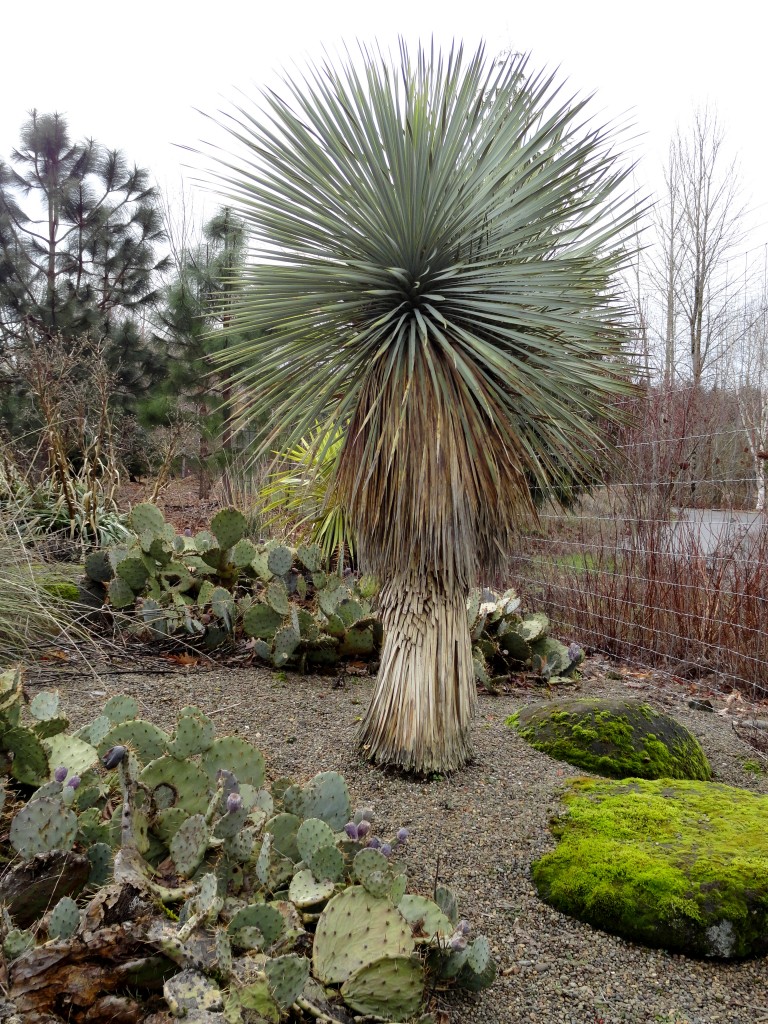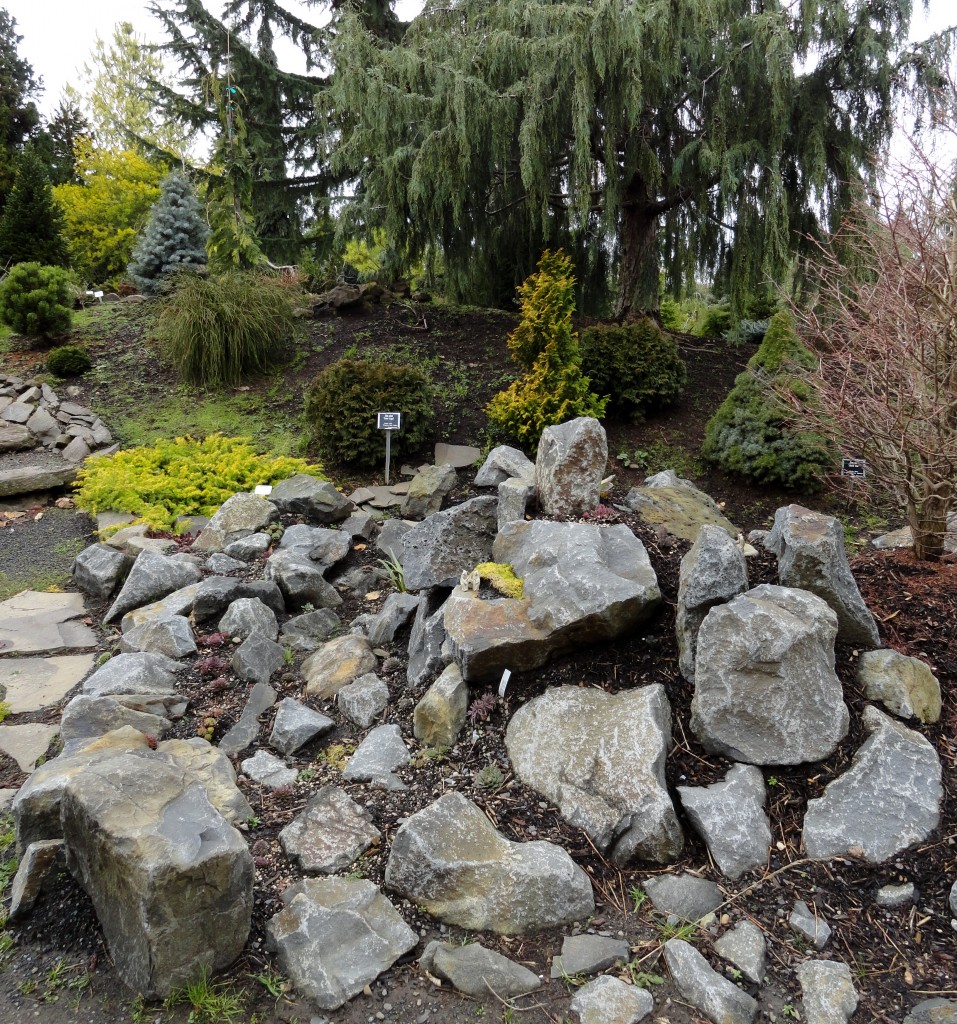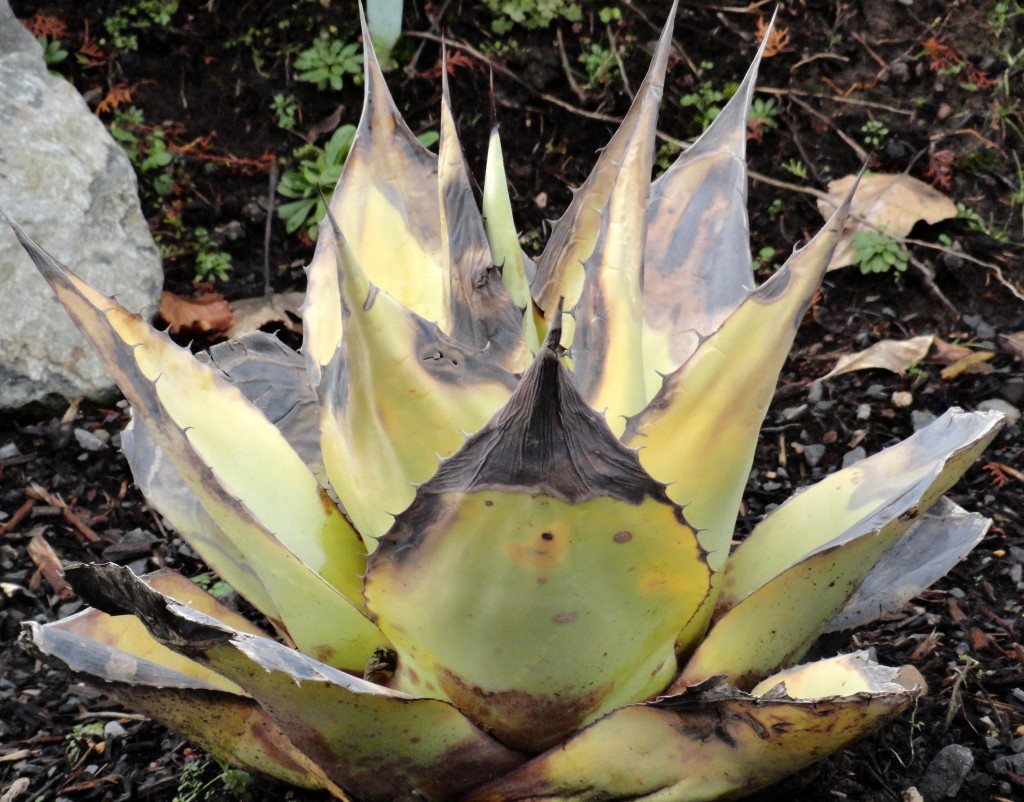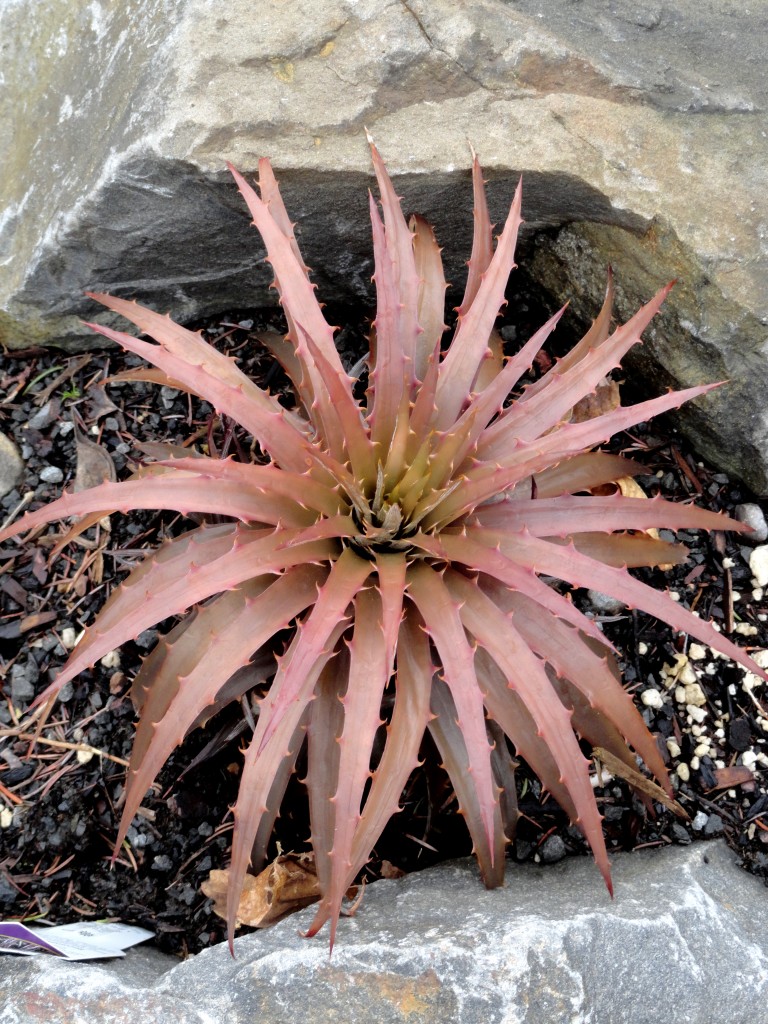I’ve previously visited The Oregon Garden only in July, you see a very different place in January. Maybe that’s why, in past visits, I’d not noticed the small xeric garden to the left of the formal entrance.

It doesn’t look newly planted. Even if the Yucca rostrata was brought in at a trunking size those Opuntia have been sprawling along in situ for awhile.

I think this is Eryngium p. lesseauxii.

Okay, now we’re in the garden proper, next to the conifer garden specifically. From their website: (the Oregon Garden is an) “80-acre botanical garden, featuring more than 20 specialty gardens showcasing the diverse botanical beauty that can be found in the Willamette Valley and throughout the Pacific Northwest”

“the diverse botanical beauty that can be found…throughout the Pacific Northwest” — yes! I think that’s why it thrills me so that they’re growing Agaves and other “spiky” plants throughout the garden. These plants are so popular, and they really do grow in places you wouldn’t expect them too — as long as they’re sited properly in sun and well draining soil. I hope seeing them in a garden like this will encourage people to try growing them — whether they’re Oregonians, or visitors from elsewhere. These handsome fellows are Agave havardiana…

A not-so-gentle reminder that it’s all about making sure you give them the conditions they need to thrive…

Agave bracteosa is one of the easiest (in my experience) Agaves to grow in our climate. I think this one may have suffered a little visitor damage (it was quite near a pathway).

Dyckia ‘Burgundy Ice’ — they’re being daring with this one! Most sources list it as hardy to Zone 9, that’s a little warmer than our usual winters. Then again…you never know unless you try.

I believe that’s a tiny Yucca baccata on the right, and I want to call the one on the left Yucca nana, but don’t quote me on that. Don’t the Sempervivum look great? You can never have to many of those.

Another view of the sad Agave ovatifolia. I wonder what happened to it? The yellow coloring is a new one for me. It does provide an arresting color-echo with the confer.

Araucaria araucana (monkey puzzle) on the left, Trachycarpus fortunei on the right.


Here you can see their method of winter protection for the hardy banana, Musa basjoo…


There’s always one in every crowd, the one who can’t wait for spring to get underway…

Still a very wintry sky above though.

There was no label on this Agave in the chipped container. Perhaps Agave parryi couesii?


Tucked under the Hakea microcarpa is the more widely seen form of Agave parryi.

I hope you enjoyed the tour of The Oregon Garden spikes in the winter!


